Web Navigation Can Be a Pain in B2B
To understand how to think about website navigation for B2B companies, it’s useful to understand B2B audiences. B2B companies are often run by technical people with products and services targeted to other technical people. In our experience creating B2B websites and brands, the common tendency from a website perspective is to push products and services, because one’s features or benefits outshine those of competitors. B2B websites often tend to be challenging to navigate and full of industry insider terminology. It’s not unusual to find no value proposition at all.
With so much content on the web and so little time on their hands, visitors come to websites looking for solutions to their problems, not to learn about why one company says it’s better than the next. The way in which a site’s navigation directs them is key towards the website being both a successful information and lead generation tool.
In my previous post I mentioned a few options for site navigation that work well. The choice of navigation depends on your audience’s need and your business model. Many sites are organized by vertical market specialty, others by solutions or products, and some by specific audiences. A model less common is what we call, “Pain-based Navigation.” Pain-based Navigation identifies the business pain you are solving and clearly directs visitors to that page or section. The site RainCastle did for Open Connect is an example of this. On the left side of the homepage, under the “Solutions” heading are a list of five business pain areas that encompass the issues of Open Connect’s customer base. By building the pain points into the navigation, we enabled prospects and customers to immediately self-identify and be directed to Open Connect’s solution to their problem. This both saved them time and reinforced that Open Connect understands them and is in a position to “relieve the pain.”
Pain-based navigation does not have to be built into the top navigation; it can also be presented as a unique content area. The overall benefit of this approach is that it signals to your audience that you are there to serve their needs as opposed to “selling your products or services.” I’ll be discussing other navigation ideas in subsequent postings.
